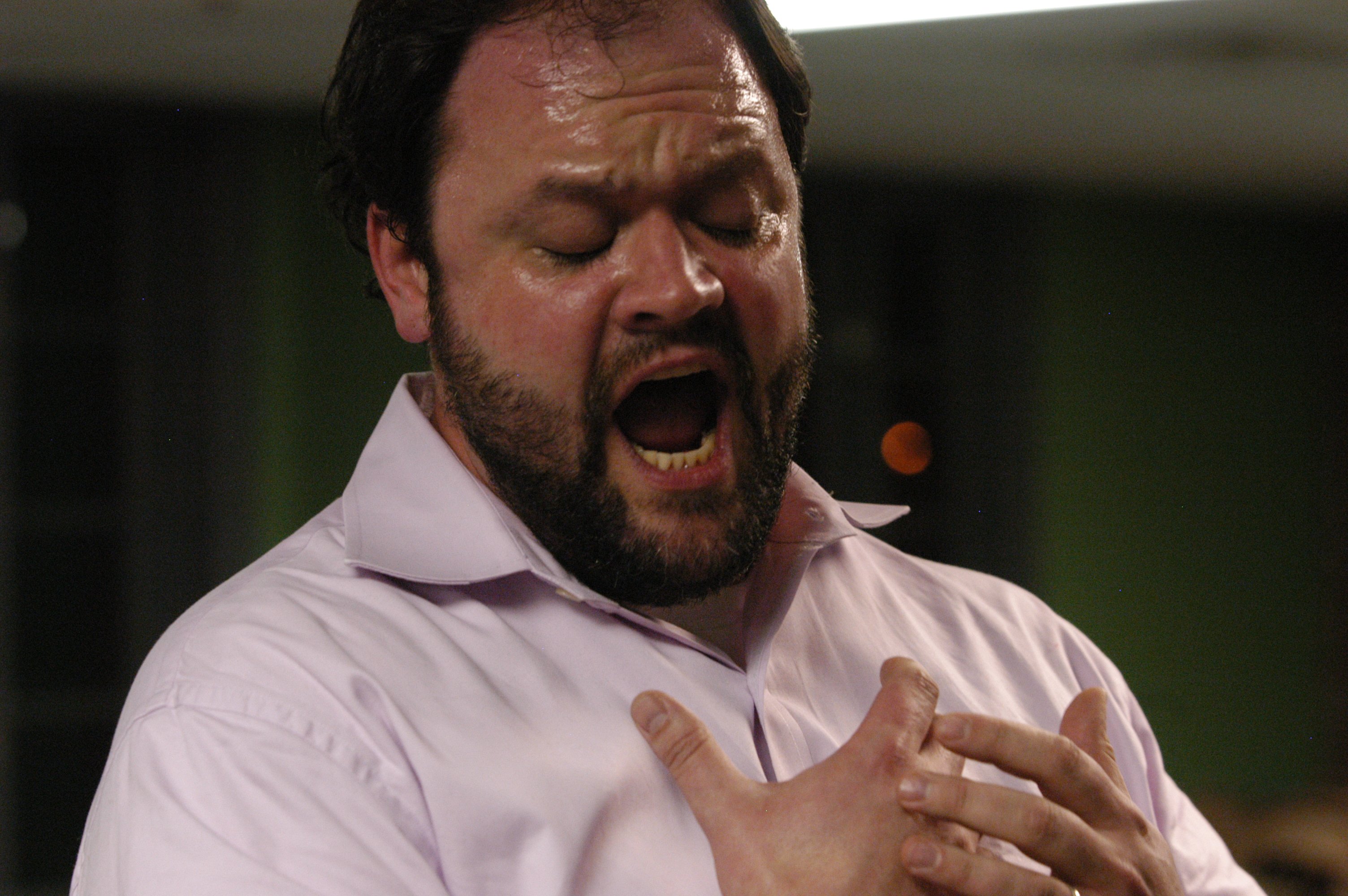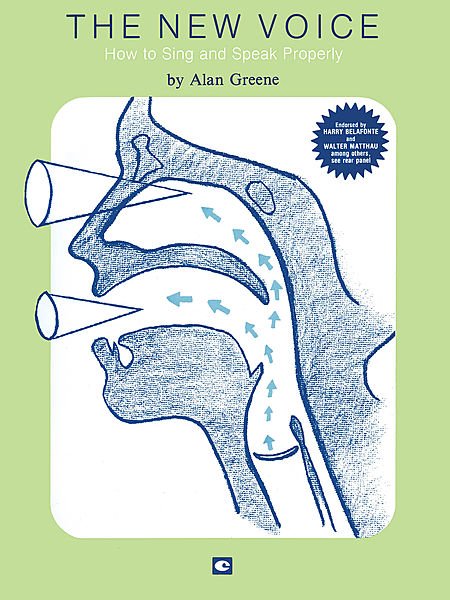How to learn to sing with your mouth
In almost all amateur or beginner groups, either the founder, or the owner of the most powerful energy for initiating a crowd, or someone who is just becomes the mouth-screaming position. If you want to learn how to sing correctly, and so that your vocals are not confused with the sounds of a bowel movement, then you need to learn at least the basics of the correct voice setting.
These rules apply in academic vocals, after which, in principle, you can sing whatever your heart desires. Even if by nature everything fits and sounds good, and all the muscles are designed by Orpheus himself, classes with a professional will still be ut very helpful.
How to learn to sing: breathing

An important part, one of the basics. Breathing in vocals is taken not by the chest, but by the entire lower abdomen, and this is an axiom. The air is inhaled only through the nose, you can forget about fast and loud breaths through the mouth. Breathing is controlled by the diaphragm And there are two subtle points here. Firstly, it cannot be kept relaxed, as the sound simply will not combine with the air. Secondly, it cannot be overstressed, since in this case the sound will also not connect, but will “break away” from the breath, which is clamped by the diaphragm and does not allow the voice to come out.
With a properly placed respiratory support, when air is combined with sound, you will feel a kind of column that will go from the throat to the groin during the next howl. Also important is the air flow during singing. For a correct understanding of the principle, I advise you to take a full breath and gradually, as slowly as possible, exhale the air. Like doing yoga. With the wrong consumption, you simply won’t be able to sing even two or three lines of text to the end, convulsively inhaling oxygen, as if you were drowned in a basin. In general, understanding how to take and hold your breath correctly is one of the simplest, but at the same time the main tasks in vocals, and this is the first thing to do.
Rid the body of clamps and open the mouth correctly
The next important task, without which it is impossible to learn how to sing normally, is to remove the clamps on your body, in particular, from the neck to the crown. Frankly, there are often exceptions and a person initially sings well, while not feeling and not understanding how it is he who manages to sing freely. But there are very few such people.
There are several dozen muscles involved in singing, and each must work in the correct mode. If you hear that your singing leaves much to be desired, and at the first lesson they said that there are tightness, then get ready: in the next few months you'll have to work them hard eliminate. He pressed his throat a little - the sound is lousy, he didn’t open his mouth to the end - the sound is lousy, the lips tremble and the chin is drawn in - the sound is still lousy!
To sound right, you must remember one thing: the lower jaw and the entire lower part of the head, including the neck, must be as relaxed as possible, like a sleeping beauty. You should not feel the slightest tension in these areas, otherwise the sound will be held by these muscles, preventing it from coming out in full. Even when the back of the neck is tense, it affects the sound as it affects all the other muscles.
When singing, the lower jaw should simply fall down, since we open the mouth with the upper jaw. As soon as you remove all tightness and completely relax the lower part of the head and neck, you will immediately feel the difference. The sound will fly outward calmly, without any obstructions. Some people could not even imagine that they could have such a voice and were genuinely surprised by their new sound. In general, when the sound does not hold and does not remain inside the body, it is able to fly very far, so much so that in the early morning on a deserted street you can be heard almost from the other end of the city.
But that is not all. When all the tightness is removed, the next and most important moment comes.
Open and keep open the throat

We all have a second mouth. No, not like Alien. I mean that part of the body where all the food falls first and all the alcohol pours, and you need to learn how to feel and control it. Just opening your usual mouth correctly will not help you tear apart the crowds of young fans.
The pharynx, or second mouth, should work in sync with your regular mouth. And if for the last you just need to choose the optimal parameters, then you should open your throat well and keep it all the time, until the end of your musical career. On the highest notes, you need to do this so that the tongue that hangs on your upper palate goes up completely when the sound with air starts to fly out of your mouth.
Simply put, you should pull the upper palate up, while also lowering the larynx. The easiest example to understand is a yawn. When you yawn, notice how freely and wide your throat opens. Now you must learn to do this without the natural mechanisms of your body. Of course, you don't need to open your mouth like this throughout the entire range, but on the highest notes you should feel the so-called pre-yawn.

There is another example to understand sensations. If you have swallowed any large piece of food that is not fully chewed, then remember how slowly it passed down the throat. This is how you should open it. The main thing is to learn not to strain the root of the tongue and the language itself. So he will close the passage of your second mouth. If your throat is not sufficiently opened while singing, the sound will be weak and dull, inhomogeneous.
In addition, you should try to open your throat and sing in a vertical position, and not in a horizontal one, for a more collected and sonorous sound, lifting up the palatine curtain. In order to learn how to do all this, as well as help the muscles quickly adapt to new work, you can start with the simplest and at the same time very effective way. Try every day to read all the articles or books aloud, while pronouncing everything in an open throat. Another excellent training will be to do the same with tongue twisters.
Direction of sound forward, work with resonators

Next step: directing the sound forward and towards the resonators. Depending on the type of voice, you will have different advantages in musical ranges. If your type is a tenor, then you will have strong highs, but a weak chest resonator. If the bass, then the chest will respond with a bang, but the head register will limp. After practicing for several years, you will, of course, even out your voice throughout your entire range. However, this is hard and routine work, which needs to be devoted to time.
Leaving the resonators, since work with them should be the last thing, let's pay attention to an important thing - the direction of the sound. As is often the case in the world of vocals, the best method is to feel, visualize and imagine. All sound should go out, forward, and not stay in you. One of the points for its direction is the place between the roots of the teeth and the upper hard palate.
The direction of the sound and stuffing the resonators is a very long and difficult task, if you reach in it skill, then you can proudly call yourself a reference vocalist. After mastering these skills, there are exercises for technique. Since there is no limit to perfection, you can and should do them constantly and endlessly.
Everyone can learn to sing correctly. It's important to understand that each person has their own range and voice potential, so you won't necessarily sound like Luciano Pavarotti, but most likely you can learn to sing like Sting. However, without the help of a mentor, it will be difficult to do all this, since it is not easy to evaluate oneself.
We just outlined the basic principles of correct vocal production, but if you want to sound cool and right, and most importantly, to be a professional, then you should go to a teacher. Preferably starting with academic vocals. Remember that the voice is also an instrument, and it is even worse to be out of tune on it than on everything else.







